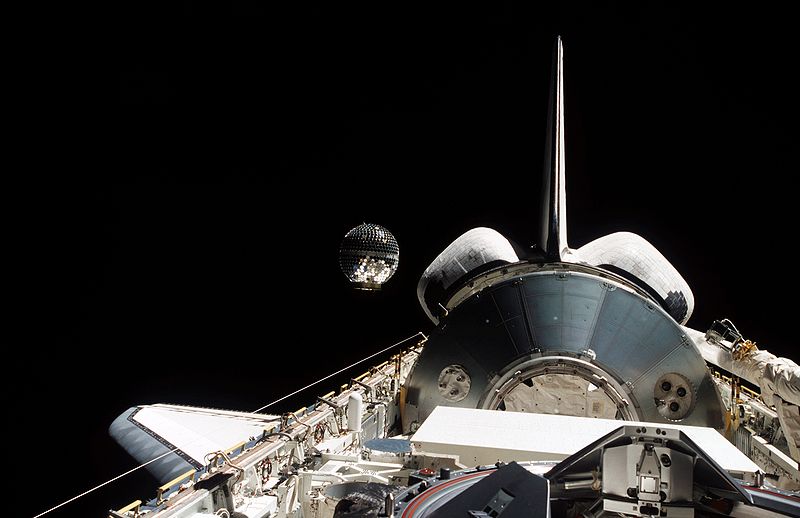A pair of small satellites launched on this date in space history …

(STARSHINE-2, released from the shuttle payload bay. NASA image, from Wikimedia Commons.)
First, 10 years ago today — December 16, 2001 — the crew of STS-108 released STARSHINE-2 while preparing for their return to Earth. Like its predecessors — STARSHINE-1 and STARSHINE-3 — this “microsatellite” was built with the help of students from around the world: students in 26 countries helped to polish the over 800 mirrors that studded the spacecraft’s surface, making the satellite highly reflective so they could track it in its orbit. The STARSHINE acronym stands for “Student Tracked Atmospheric Research Satellite Heuristic International Networking Experiment,” and more than 25,000 students participated in the project.
Five years later, on this date in 2006, a Minotaur rocket launched from Wallops Island, Virginia, carrying the “nanosatellite” GeneSat-1. Conceptually similar to BioSatellite-1, GeneSat-1 carried samples of bacteria — specifically, E. Coli — to monitor the effects of space radiation. Unlike the BioSatellite series, which involved returning the samples to earth for study, GeneSat-1 carried special optical instruments to observe the bacteria and radioed those observations to the ground.







